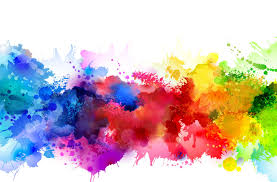The Art of Design: Transforming Ideas into Reality
Design is a powerful tool that shapes the world around us. From the buildings we inhabit to the products we use, design plays a crucial role in our daily lives. It is the process of transforming ideas and concepts into tangible, functional, and visually appealing creations.
Good design is not just about aesthetics; it’s about solving problems and enhancing user experiences. Whether it’s creating a logo for a brand, designing a website interface, or crafting a piece of furniture, every design decision has a purpose and impact.
Designers are like visual storytellers who communicate through shapes, colors, and layouts. They carefully consider every element of their design to evoke emotions, convey messages, and engage with their audience. A well-designed product not only looks good but also functions seamlessly and intuitively.
One of the most exciting aspects of design is its ability to evolve and adapt to changing trends and technologies. Designers are constantly pushing boundaries, experimenting with new ideas, and embracing innovation to stay ahead in a competitive market.
Whether it’s graphic design, interior design, fashion design, or industrial design, each discipline brings its unique perspective and creative approach to problem-solving. The diversity of design allows for endless possibilities and opportunities for collaboration across different fields.
In conclusion, design is more than just making things look pretty; it’s about creating meaningful experiences that resonate with people on a deeper level. It’s about blending creativity with functionality to inspire, inform, and delight. So next time you admire a beautifully designed object or space, remember the thoughtfulness and expertise that went into bringing that vision to life.
5 Essential Design Tips for Visual Harmony and User-Friendly Interfaces
- Use a consistent color palette to create a cohesive design
- Incorporate white space to improve readability and visual appeal
- Choose fonts that are easy to read and complement each other
- Ensure your design is user-friendly and intuitive for navigation
- Optimize images for web to maintain quality while reducing file size
Use a consistent color palette to create a cohesive design
Using a consistent color palette is essential in creating a cohesive design. By selecting colors that complement each other and sticking to them throughout your project, you can establish a sense of harmony and unity that ties everything together. Consistency in color not only enhances the visual appeal of your design but also helps create a seamless and professional look that resonates with your audience.
Incorporate white space to improve readability and visual appeal
Incorporating white space is a crucial design tip that can significantly enhance both readability and visual appeal. By strategically using empty space around text and elements, designers can create a sense of balance, clarity, and elegance in their designs. White space allows content to breathe, making it easier for viewers to focus on the important information without feeling overwhelmed. Additionally, white space can improve the overall aesthetics of a design by creating a clean and sophisticated look that draws attention to key elements. By embracing white space effectively, designers can elevate the readability and visual impact of their creations.
Choose fonts that are easy to read and complement each other
When it comes to design, selecting fonts that are both easy to read and harmonize with each other is essential for creating a visually appealing and cohesive aesthetic. Choosing fonts that are legible ensures that your message is communicated clearly to your audience, while selecting complementary typefaces helps establish a consistent visual identity across your design. By paying attention to typography and selecting fonts thoughtfully, you can enhance the readability of your content and elevate the overall look and feel of your design.
Ensure your design is user-friendly and intuitive for navigation
When creating a design, it is essential to prioritize user-friendliness and intuitive navigation. A well-designed product or interface should be easy for users to understand and navigate without confusion. By focusing on simplicity, clear organization, and logical flow, designers can enhance the overall user experience and ensure that users can easily access the information or functionality they need. Prioritizing user-friendly design not only improves usability but also increases user satisfaction and engagement with the product or service.
Optimize images for web to maintain quality while reducing file size
Optimizing images for the web is a crucial step in maintaining quality while reducing file size. By compressing images without sacrificing visual integrity, websites can load faster and provide a smoother user experience. This practice not only improves site performance but also helps in conserving bandwidth and storage space. Utilizing tools and techniques to optimize images ensures that websites remain visually appealing and efficient, striking a balance between quality and speed for an enhanced browsing experience.


Leave a Reply